21 Ways How to Find Niche Products To Sell Online (2024)
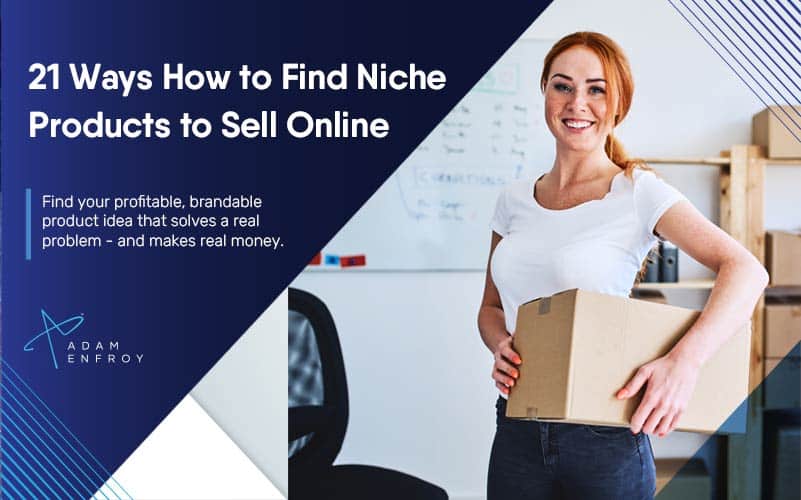
Covid-19 has both created a steady rise in retail bankruptcies and accelerated the shift to ecommerce by 5 years.
With traditional retailers moving online and the search landscape getting more competitive, it’s a difficult time to start an online business:
- Consumers expect two-day shipping and instant gratification.
- Amazon’s vertical integration is disrupting entire industries.
- Many product markets are oversaturated with options.
However, carefully choosing the right product will impact everything in your ecommerce business, from logos, web design, and branding, to order fulfillment and the unboxing experience.
Success in ecommerce all begins with an amazing product.
In this guide, I give you 21 tips to find the perfect niche product to start selling online.
Let’s get started.
How Do I Find the Best Products to Sell Online?
First, your product needs to solve a problem for your audience. It should also be niche-specific, unique, fulfill a desire, and have branding potential.
1. Conduct market research.
First, narrow down your choices by choosing an industry. What sort of products do you want to sell? Are you interested in fashion, technology, telemedicine software, food, or fitness? There are products you can sell in any industry.
Once you decide on an industry, hone in on the problem that you’re solving.
Once you have your problem and solution (your product), start to conduct market research.
Check out my article on the best market research tools for some great options to get started.

There are many ways to research the market – Google, Quora, forums, and social media channels are a good free way to start. If you do a little digging and think your product is still a good fit for your audience, dive deeper.
Send an online survey to potential customers to learn what solutions they’re searching for and understand their buyer personas on a deeper level. Next, try interviewing some respondents to get more in-depth answers or conduct a small focus group in your community.
Talk to people who give both positive and negative responses. Those who respond negatively may be able to articulate what they’re looking for and inspire a whole new product line.
2. Research your competitors.
If your product niche has some competition, that’s actually a good thing. It’s better to see other people in your niche that are active and selling rather than trying to sell something completely new that no one may want. Competition is healthy.
In addition to looking at what your competitors are doing right, look at what they’re doing wrong. Read their reviews and see what customers say they can improve.
- Can you take advantage of those negatives by producing a similar, improved product?
- Or can you offer better shipping options? A cheaper price point?
- Are there potential customers that their market isn’t reaching?
- Can you beat them when it comes to SEO?
Use a combination of SEO tools, pricing research, customer research, and your own instinctive feelings to find competitive gaps in the market.
3. Your products need to solve problems.
The most reliable way to find a successful product is to look for something that solves problems. People want convenience; if you can offer a product that makes things easier, people will line up to give you their money.
Start by thinking about your own problems. If you find something frustrating, others likely feel the same way and are willing to pay for a solution.
This doesn’t necessarily mean you have to reinvent the wheel. You can make improvements to existing products or introduce an existing product to a new audience of people.
Take Larq as an example.
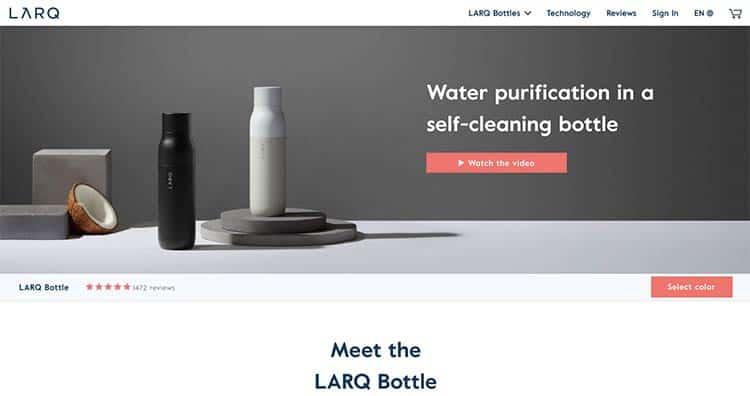
Water bottles have been around for centuries, but Larq created a niche for themselves by introducing a self-cleaning bottle. With this simple improvement to the basic design, they built a successful business.
4. Your products should be niche-specific.
Look for product ideas that a specific target audience could get excited about. Start with your own passions; if you’re working on something you love, odds are you know the niche and the problems within it.
A niche audience makes it easier to market your product. You know who you’re speaking to and can create a consistent brand voice on your product pages, in your emails, on social media, and everywhere you interact with your customers.
If you can identify and serve a niche market segment, you’ll find a highly-engaged and higher-converting customer base.
5. Your products need branding potential.
Consumers today purchase from brands that are authentic and resonate with them on a personal level. Your products should be inspired by your overall brand mission.
For example, Tom’s Shoes is more than just a shoe retailer; their mission is to make an impact, and for every $3 they make, they give $1 away. So far, they’ve generated $2 million to help global Covid-19 relief efforts.
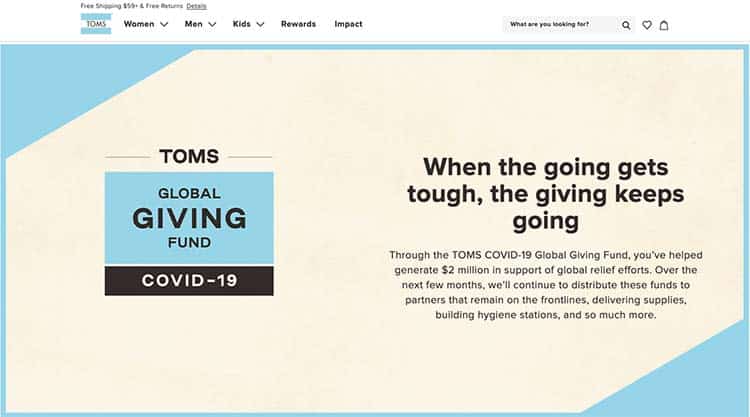
Your products need to inspire a brand story; a vision that is larger than the products themselves.
6. Look for trending products.
While this isn’t a great long-term or sustainable business model, it can be beneficial to hop on a trending product idea.
If you can identify something that’s becoming popular, you have the opportunity to own the SEO keywords, be perceived as an expert in the market, and capitalize before the trend peaks.
This doesn’t just refer to fads, like fidget spinners in 2017, or new essentials, like face masks in 2020. Trends can also refer to political or social movements that you can capitalize on, such as the environmental movement leading to a demand for sustainable products.
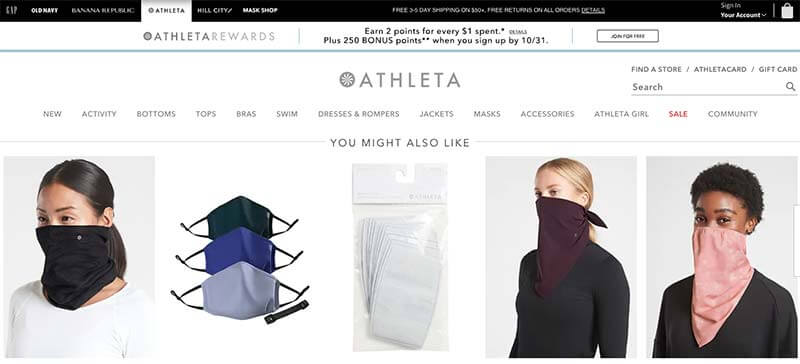
Start by going to the places your customers frequent, whether that’s online forums, popular industry blogs, Facebook groups, or subreddits. These online spaces for passionate fans will often point to the latest tech and trends customers look for.
You can also see where the market may be moving with online tools. Type a topic into Google Trends, and the tool can show you interest over time and which subregions show the most interest.
Amazon also produces a trend report that can show you what’s selling well, and the site highlights their best sellers, hot new releases, and movers and shakers.
Getting on a trend early gives you the opportunity to own SEO keywords and become a market leader.
7. Find products that fulfill desires.
Look for opportunities to fulfill guilty pleasures. Shoppers often simply want to buy things that make them feel good. There’s a reason that Spanx is more popular than workout gear – feeling good is easier and faster than long term goals. And this is true in ecommerce.
It doesn’t matter if it’s a small luxury like chocolate or a high-end luxury car, people buy things that fulfill their desires.
Bon Bon Bon, for example, has built a business around providing small, relatively low-cost guilty treats for people who like decadent chocolates.
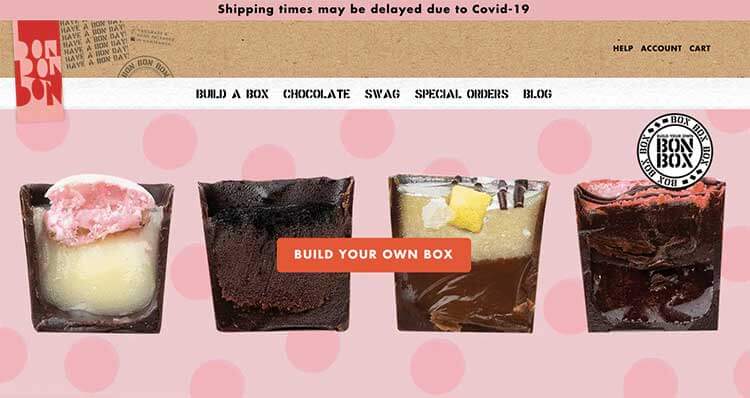
This is a niche product, that fulfills a desire, with great branding potential – and that hopped on the trend of subscription boxes.
You don’t have to cover all four of these categories, but keep them in mind when selecting your niche product.
8. Find products with passionate fans.
Passionate, fans bring two benefits to your business. First, they make purchases, which is exactly what you want customers to do. Second, they rave about your products to other people. These huge fans become brand ambassadors, helping to sell your products to their friends and family for free.
What sorts of products have passionate fans? Look for things that become part of a person’s identity. In general, grocery shopping isn’t something people get passionate about.
Still, if a particular diet, such as the paleo diet, becomes part of someone’s identity, then food becomes something they’re passionate about. Business owners can make money selling grass-fed bone broth.
Other things people become passionate about include comic books, video games, sports teams, and marathon running. People are willing to spend money on products that help affirm their identity.
The Big Green Egg is an example of a product people are passionate about. Although it looks like just another barbecue from the outside, the ceramic interior is a point of differentiation from other outdoor cookers.
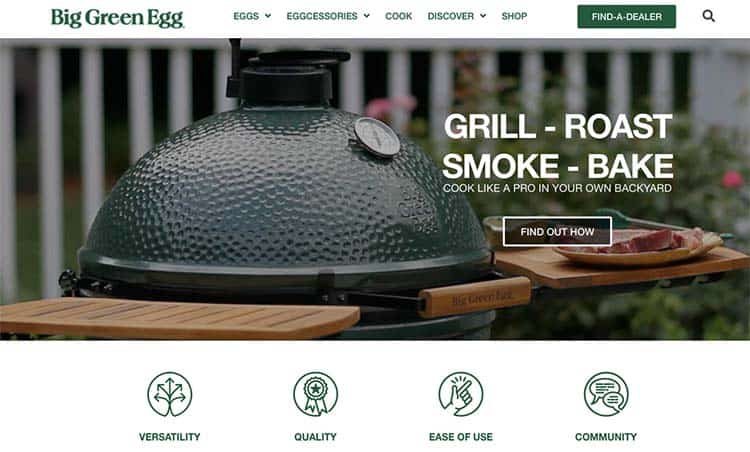
Happy customers rave about them, with many making YouTube videos that show off the product’s abilities. The company encourages its fans by organizing events like EGGfest and showcasing competitions and teams that cook with their products.
9. Factor in your profit margins.
All industries have different profit margins, and customers will accept a higher mark-up for certain products.
For example, luxury goods have a higher mark-up because customers are willing to pay a premium for the brand name and customer experience. Whereas food and commodities have a low profit margin and rely on a high sales volume.
To calculate your potential profit, you must factor in all your costs, including the cost of goods sold (COGS), employee salaries, ecommerce marketing costs, site hosting fees, payment processing, storage, and order fulfillment.
Your ecommerce business model will play a big role in your final profit margin, so make sure to break out those spreadsheets and figure out the MSRP for your products to keep a healthy margin.
What Types of Products Can I Start Selling Online?
There are two big decisions to make when choosing what to sell online: commodity or niche, and physical or digital? Commodity or niche is related to the market you’re trying to break into, while physical or digital is the type of product you’re planning to sell.
1. Commodities.
These products are high demand, essential, or popular products. They’re generally considered goods that everyone needs — like underwear, toilet paper, or light bulbs — or popular labels within a niche, like brand name socks.
The potential market for these products is generally very high, and there’s a regular, ongoing demand. However, there’s usually also a lot more competition with other major retailers like Amazon and Walmart, and lower profit margins.
It’s hard to get established and stand out when you’re competing against the big guys and selling products that aren’t very memorable. Major brands also take advantage of economies of scale, so they may be able to undersell you.
2. Niche Products.
On the other hand, niche products are unique and serve a specific customer base. These items can be exclusive, like handmade crafts sold on Etsy, custom pet products, sports gadgets, or anything that serves a niche audience.
When you’re selling niche products, it’s easier to define a target audience and reach your customers.
The exclusivity of these products also means you can charge more, which means higher profits. However, your market is smaller, and people may not need to buy a niche item regularly, which can lead to slower growth.
If you’re having a hard time deciding, you can always choose to sell both commodity and niche products. Many companies build a brand around niche products but also sell a lot of commodity products to increase their sellable inventory. This can increase the likelihood of repeat customers and attract new customers to the site.
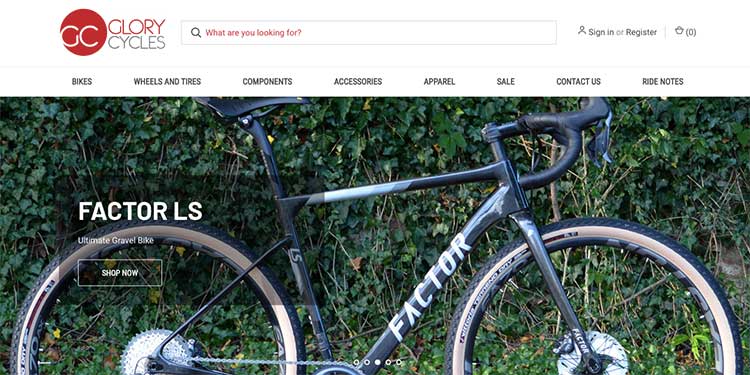
Glory Cycles is a good example of this mixed approach to selling. The niche site sells high-end bicycles as well as the components to build or improve a bike. However, they also stoke a range of popular brand accessories that all cyclists regularly need, including helmets, cycling clothes, lights, and water bottles.
Although their customer won’t need to buy an expensive bike regularly, they regularly need new helmets and shorts. Stocking these items keeps customers returning to Glory Cycles.
Next, after deciding on niche or commodity products, there’s also the question of physical vs. digital.
3. Digital Products.
These products only exist digitally and include eBooks, computer games, apps, or courses. At first glance, digital products may seem easier. There’s no need to store or ship digital products, and you can set up your site to immediately send them to your customer once they make a purchase.
However, they require work upfront and you usually have to create a digital product yourself. Additionally, some marketplaces like Facebook don’t allow you to sell digital products through their platform.
For example, on this blog, I sell two digital products that help online entrepreneurs with SEO and affiliate marketing. They are both a series of documents, PDFs, and spreadsheets that I uploaded to my ecommerce platform as a zip file. Then I used the BigCommerce for WordPress plugin so that I can sell them on my WordPress site.
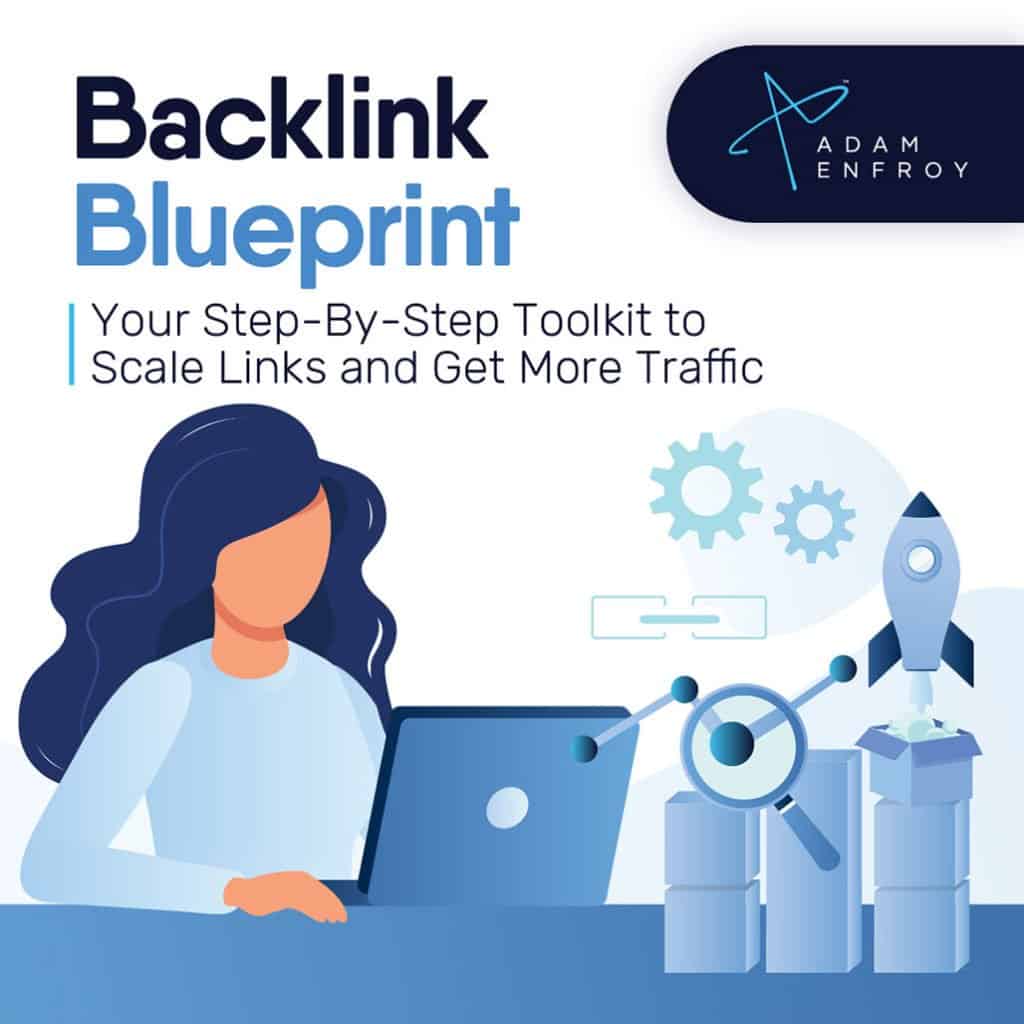
For this guide, we’re mainly going to be talking about finding niche physical products to sell online.
4. Physical Products.
If you want to sell physical products, you have to factor in production time, warehouse space, and the labor costs of storing, packing, and shipping items.
You also need to decide on your business model, whether that be dropshipping, outsourced manufacturing, or in-house manufacturing.
If you’re inventing a completely new product yourself, you also need to invest in prototyping, which includes five different stages.
It’s easy to start feeling overwhelmed with all of your options.
In the rest of this guide, we’ll cover other key factors to consider so that you can narrow down your choices and pick a top-performing product to sell.
Factors to Consider When Selling Products Online.
You also need to factor in logistical decisions when deciding on your products. These include where you’re going to sell your products, your ecommerce business model, and delivery methods.
These final factors can’t be forgotten and will help you feel more confident about your small business plans.
1. Where to sell your products.
First, decide where you’re going to sell your products. The three main options are marketplaces, social media platforms, and your own ecommerce site.
Online Marketplaces.
These are existing selling platforms that give you simple ways to add your own product listings, like Amazon, Etsy, eBay, Facebook Marketplace, Bonanza, or Craigslist.
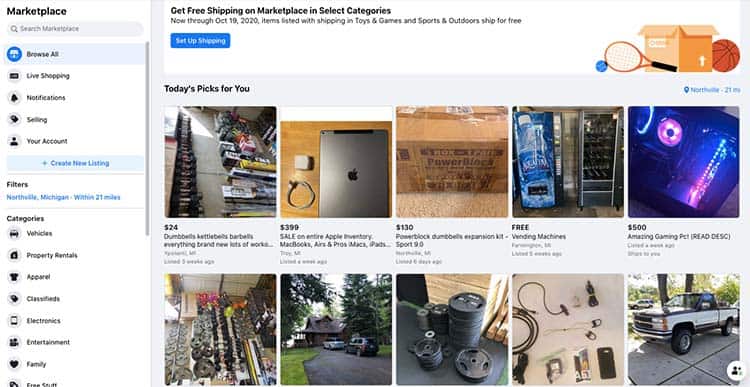
They have an existing audience and site structure for online selling, making it easy to sell stuff online. However, you don’t have as much control over your brand, there are listing fees, and you’re also competing against many other people selling on the site. If you’re planning to use local pickup and delivery, you can also create local listings for your business to gain more visibility in small, local markets.
Social media channels.
These social media sites have many limitations and benefits. Selling on Facebook, Instagram, Google Shopping, and Pinterest include tools that enable your audience to purchase directly on the platform.
This allows you to show your products to followers, and the convenience of immediate purchase helps convert to sales. However, you don’t have control over your own online store, including your branding and checkout experience.
Ecommerce site.
The final (but best) option is building your own ecommerce website using an ecommerce platform like BigCommerce. This option gives you full control over the look and feel of your site.
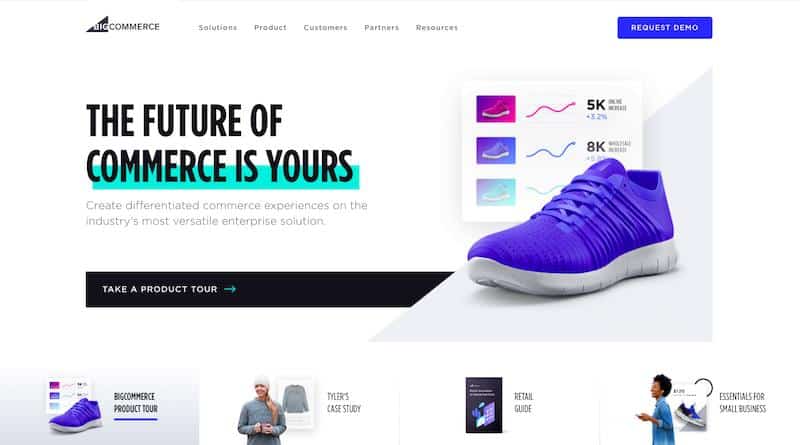
You can use their website builder to create your own online storefront, set up shipping and taxes, build product pages, and enjoy fast loading speed, SSL certificates, and more. Using a platform like this also lets you collect and analyze customer data, which helps your online marketing efforts.
The best idea is to use a combination of different sales platforms. This mitigates your risk in case your own website goes down or the social media algorithms don’t go in your favor.
With a presence on social media and the marketplace, you can attract consumers to your site and obtain email addresses so that you can directly appeal to customers.
Nevertheless, your own site doesn’t come with existing users, so digital marketing costs are involved in driving customers to your site, as well as the monthly platform costs. There are also credit card transaction fees and monthly fees for other payment processors and payment gateways.
2. Ecommerce business models.
There are four main types of ecommerce business models. The first two, consumer-to-business (C2B) and consumer-to-consumer (C2C), aren’t relevant for people planning to sell their own products. That leaves business-to-consumer (B2C) and business-to-business (B2B) models.
Business-to-consumer.
B2C is a traditional retail business where goods are sold to the general public. This is the most common ecommerce business model and benefits from a shorter sales cycle, high order count, and excellent brand awareness.
Business-to-business.
The B2B model is exactly how it sounds — a business selling to another business. Products can be physical items, like wholesale products, or can also be digital products, like software that a company needs.
B2B models can benefit from large and recurring orders, which can lead to higher profits. However, there is usually a much smaller audience base than B2C, more in-depth work on purchase orders, and higher-touch customer service.
3. How to deliver your ecommerce products.
Your ecommerce business model includes the exact details of how you will source and deliver your products. There are many different options, and the right one depends on the type of product you’re selling and how much control you want to retain.
Direct-to-consumer.
D2C business owners sell directly to consumers, cutting out any middlemen. They may manufacture their own products or outsource production. Selling direct allows the company to keep control over branding, pricing, and customer experience, empowering them to build a loyal customer base.
Private label or white label.
White label products are where you apply your name, brand, or images onto a generic product. With private label products, a manufacturer creates something for you to sell exclusively. These models mean less time in design and production, allotting your more time to market the product.
Wholesaling.
Wholesalers sell products in bulk at less than the retail price. The opportunity for profit comes through large orders. Generally, wholesalers sell to retailers who then sell to consumers; however, some wholesalers sell in bulk to budget-conscious consumers.
Dropshipping.
Dropshipping is a popular model for online sellers. In the dropshipping model, the seller sources, markets, and sells items that are then supplied, packed, and shipped by a dropshipping supplier, like AliDropship or Printful. In essence, dropshippers are the middlemen.
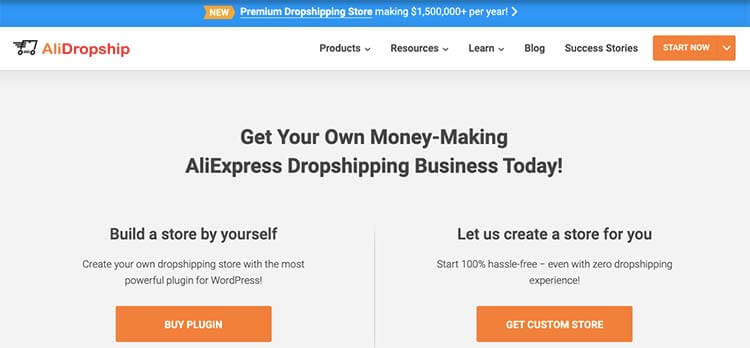
While this can lead to a lower profit on each item, you don’t have to worry about storing or shipping products, appealing to more hands-off business owners. Many ecommerce platforms have built-in integrations that help you easily set up a dropshipping business.
Subscription services.
With subscription services, consumers pay a monthly or weekly fee and receive new products on a regular basis. Box subscriptions are a popular form of this model, where a range of related products is sent to customers monthly. Boxes can be related to anything, from craft projects to clothing to wine.
This model can also work with digital services. You can get a regular fee from customers to access software, or provide them with music, ebooks, meditation, or other products, on a regular basis. This model gives you a regular income, and you can take advantage of seasonal sales when choosing things to add to the box.
However, it can be a lot of work to source and pack items regularly, and you have to think of new things every month to keep customers interested.
How Do You Start Selling Online?
Now that we’ve covered some tips to consider when choosing your product to sell, it’s time to start selling.
1. Do market research and choose your products to sell.
Follow the steps above to do your research, and choose what products you want to sell. Remember to find a product that solves a problem, is niche-specific, fulfills a desire, and is brandable.
Crunch the numbers to make sure your idea has healthy profit margins a good chance of success. This is also the time to define your target keywords, start building your brand story, and connect with your prospective customers.
It’s possible to build your brand before deciding on a product to sell, which can give you a jump-start when it comes to launching your business. Spearmint Love, for example, started as a baby blog.
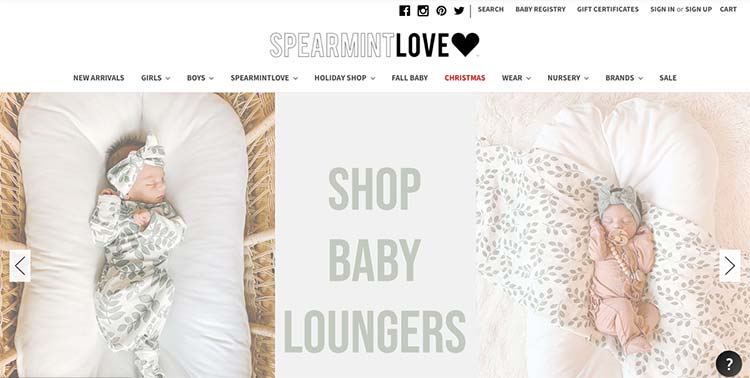
When owner Shari Lott decided to open her own store, she already had a dedicated audience ready to try her products.
2. Choose your ecommerce platform.
There are lots of players in the ecommerce marketplace, including BigCommerce, Wix, and Shopify. The options you choose will depend on your needs, but BigCommerce is a great choice, as it can scale with you as your business grows.
All of the features you need are included in the monthly price and they have a lot of web design templates to choose from:
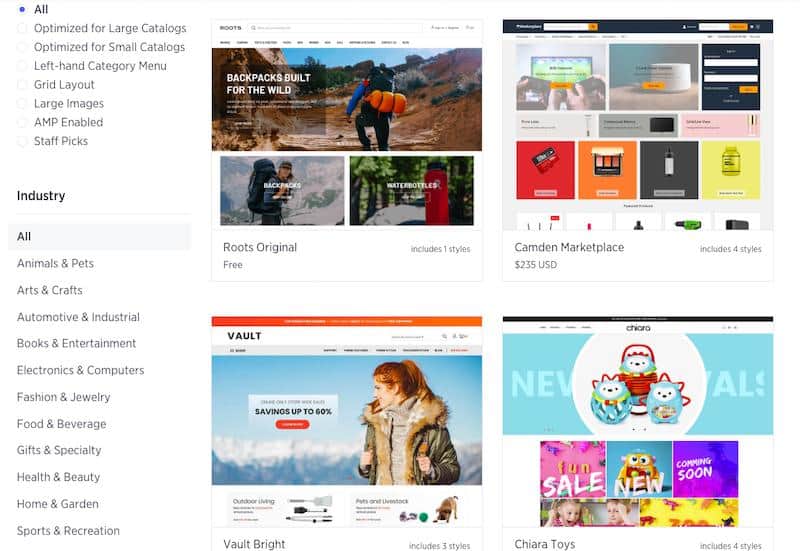
Setting up a store with BigCommerce is easier than you might think, especially with the drag and drop Page Builder tool. It’s easy to add your categories and products, and you can select a theme to customize, which helps you get the right look for your brand.
BigCommerce also walks you through the back-end settings, like currency, shipping, taxes, and order fulfillment, so your store is ready at launch. If you find yourself struggling, their help center has documentation, guides, and a community of other users ready to help.
3. Create your product content.
Your product pages are the most important pages on your site, as that’s where customers make their purchase decisions. There are two key elements to your product page: descriptions and imagery.
Both are equally important. While high-quality images can convert sales, it’s the description that draws customers to the page, especially as this is what is indexed on search engines.
When writing a product description, tell a story.
Don’t just cover the features and benefits, but write about the emotional appeal of the product, the relatable problem that it solves, and how others are benefitting from it.
Your description should clearly state what your product can do for them. More importantly, it should be unique and written with tantaliing sales copy.
Take a look at how the furniture retailer Burrow writes copy for their Bento Side Table. While it’s simply a table, they don’t just say, “It has four legs and you can put stuff on it.” They tell a story and use captivating language:
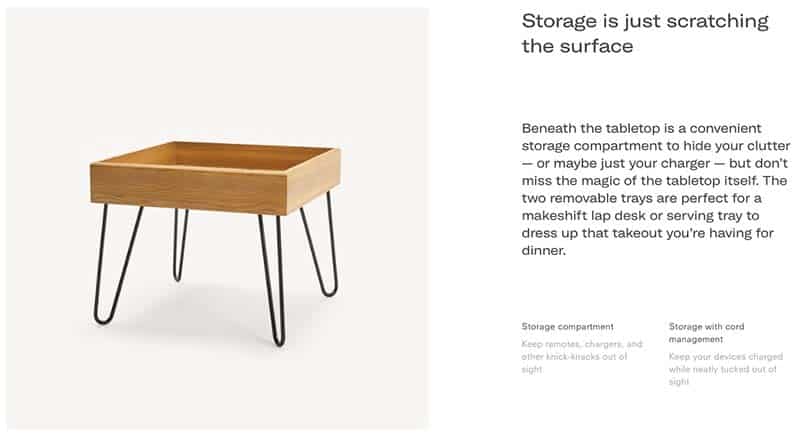
When it comes to images, include multiple pictures of each product, starting with the hero image on a white background. Show the product from different angles, and take more high-quality photos while it’s in separate pieces.
Also include a few pictures of the product in use, though these shouldn’t be the bulk of your images. Keep images clear and high-resolution, then use a photo editing tool like PhotoShop to save them in a web format with a smaller file size.
Also, remember to add alt text to each image to help Google’s web crawlers index the images. If you’re serious about being successful, do some research on product page best practices to understand the different strategies for building high-converting product pages.
4. Begin promoting and marketing your website.
Once your website is launched, it’s time to start driving traffic to it. You may have a head start if you’ve already started building your brand, gathering email addresses, and social media followers.
Search engine optimization (SEO).
In general, marketing your products requires a mix of strategies, both paid and unpaid. SEO, or search engine optimization, is the most important step. This involves keyword research to make your site visible on search engines.
First, conduct keyword research and look for long-tail keywords as big retailers likely dominate basic keywords. For example, it will be hard to get traction for the keyword “jeans,” but “vintage denim jeans” or “skinny jeans for muscular men” may allow you to compete on page one of the search engine results pages (SERPs).
Your on-page ecommerce SEO strategy has three main components: your product pages, your category pages, and your blog posts.
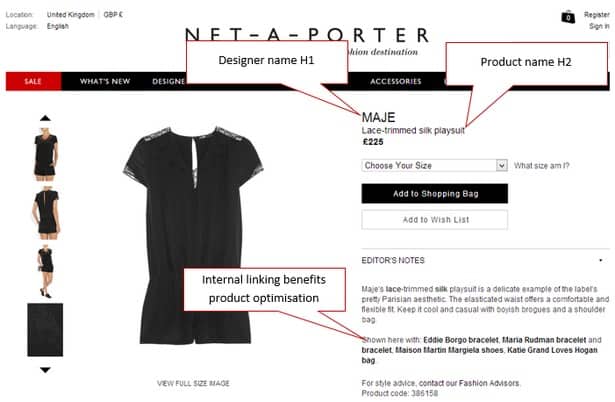
Blog posts will bring in the most traffic and should be related to your products. For example, if you’re a camping retailer, you could write a post on the “10 Best Backpacking Routes in the US” and capture an audience that may be interested in your products.
Your blog posts then funnel individual readers to your category and product pages.
Your category pages should attempt to rank for the category itself: i.e. small backpacking tents, hiking poles, men’s hiking boots, etc. Then your product page should try to rank on Google for the product search itself: The Northface Stormbreak 2 Camping Tent.
Once you have your content strategy in place, it’s vitally important to start obtaining backlinks from other reputable sites in your niche to build Domain Authority (DA). This DA is a number from 0 to 100 that tells you how likely you are to rank for keywords in your niche.
Links are like the currency of the Internet; if none point to your site, it will be almost impossible for any of your content to rank. Once you start building DA via backlinks and guest posts from other sites in your niche, Google will look at you as a more trustworthy site and reward you with better search rankings.
If you’re looking for more SEO help, you can read my full step-by-step guide on how to start a blog for more tips on how I built an audience of 500k monthly readers (and $80k in monthly revenue) in under 2 years.
Attract a social media following.
Building a social media following is also a great way to drive traffic to your ecommerce website. You should have a presence on multiple social media sites, and choose which ones based on your market.
For example, clothing brands do well on Instagram, crafting brands do great on Pinterest, and B2B brands may do best on LinkedIn.
Be part of the conversation about your industry to attract followers and stand out as an authority in your niche by posting regularly and following similar accounts.
Build your email list.
Email marketing is a huge part of any ecommerce marketing strategy. You should install an exit-intent pop-up on your website so that every user sees a pop-up with an offer before they decide to leave.
Once they sign up for your email list, use an email marketing tool to send a welcome email series. These emails should provide an intro discount, tell your brand story, and get your list excited about your products.
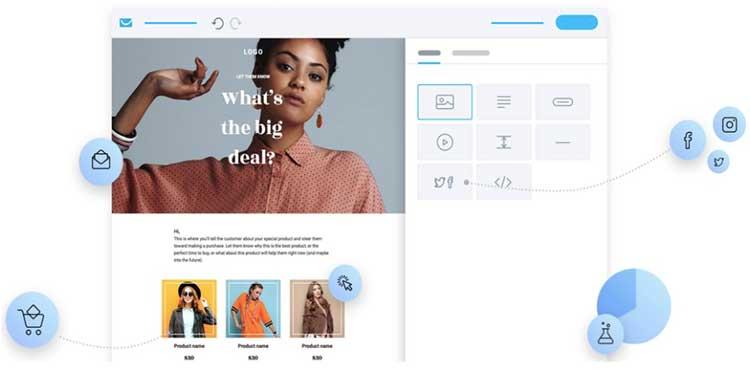
Abandoned cart emails are also vitally important for ecommerce brands. If a visitor goes to a product page and adds an items to their cart but doesn’t convert, abandoned cart emails can be sent to them reminding them of what’s in the cart and enticing them to purchase.
These abandoned cart emails can even be in a series, providing a shopping cart reminder in email one, then tiered discounts in emails two and three days later.
Start with paid advertising.
If you have the budget for it, consider paid advertising to drive more traffic to your site. There are many different forms of paid advertising, including pay-per-click advertising, influencer marketing, and affiliate marketing.
Some of these options are more effective than others, so make sure to diligently keep track of your ROI.
Here are some paid advertising factors to consider:
- Start with remarketing ads, targeting people who’ve already visited your website. Product DPA ads on Facebook can be extremely effective.
- When using Facebook Ads to find a new audience (prospecting), aim for a return on ad spend (ROAS) of 2.5:1.
- Google PPC can be extremely competitive and costly. Be very careful with the keywords you target and aim for a ROAS of 3:1.
- Google Shopping can be an excellent way to generate sales by syncing your product catalog with the Google Shopping engine. This works well for niche products – commodities are tough to sell on Google Shopping as you’re competing with major retailers.
Remember, paid advertising on Google and social media channels enable you to access a lot of data, so make sure you target the right audience segments and use that data to your advantage.
Executive Summary
Success in ecommerce all begins with an amazing product.
It is the product that becomes the heart of your brand story, aids your marketing efforts, and dictates the audience you sell to.
When selecting a niche product to sell online, it should solve a pain point, be niche-specific, fulfill a desire, and have branding potential. You also need to factor in your profit margins, competitors, and ecommerce business model.
All things considered, the product has to spark a passion in you. The idea of others enjoying your product has to create the momentum to catapult you to ecommerce success.
Selling your own product and becoming an online entrepreneur is a lot of hard work.
But imagine the feeling of changing the lives of thousands (or millions) of people with a product idea that only you created.
Did this guide help you decide on a niche product? Are there any other factors that have helped you sell your ecommerce products? Let me know in the comments below.




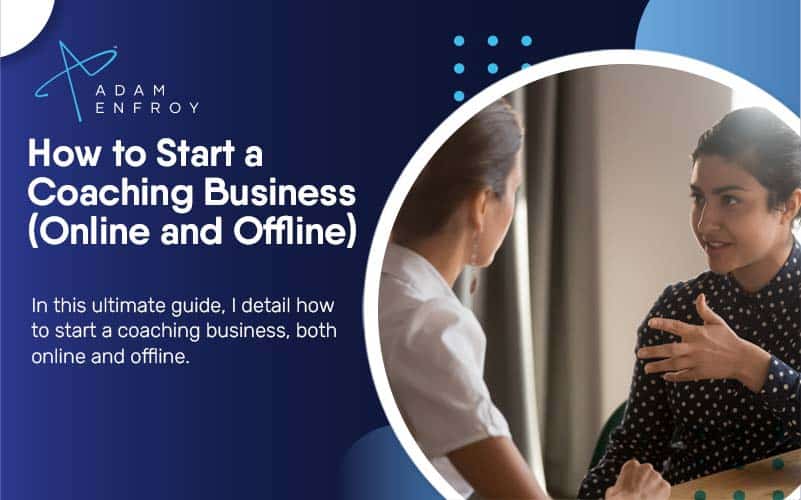

I totally agree with this post. Many people find it hard to decide on a product niche. Hopefully they took away something from here…